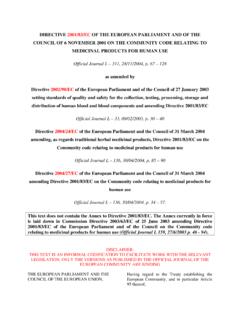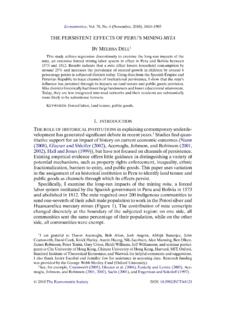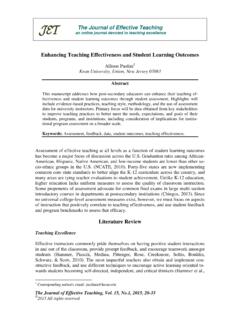Transcription of Instructions for Form 8594 (Rev. November 2021)
1 Userid: CPMS chema: instrxLeadpct: 100%Pt. size: 9 Draft Ok to PrintAH XSL/XMLF ileid: Instructions /I8594/201212/A/XML/Cycle03/ source(Init. & Date) _____Page 1 of 3 15:59 - 28-Aug-2012 The type and rule above prints on all proofs including departmental reproduction proofs. MUST be removed before for Form 8594(Rev. December 2012)Asset Acquisition Statement Under Section 1060 Department of the TreasuryInternal Revenue ServiceSection references are to the Internal Revenue Code unless otherwise DevelopmentsFor the latest information about developments related to Form 8594 and its Instructions , such as legislation enacted after they were published, go General InstructionsPurpose of FormBoth the seller and purchaser of a group of assets that makes up a trade or business must use Form 8594 to report such a sale if goodwill or going concern value attaches, or could attach.
2 To such assets and if the purchaser's basis in the assets is determined only by the amount paid for the 8594 must also be filed if the purchaser or seller is amending an original or a previously filed supplemental Form 8594 because of an increase or decrease in the purchaser's cost of the assets or the amount realized by the Must FileGenerally, both the purchaser and seller must file Form 8594 and attach it to their income tax returns (Forms 1040, 1041, 1065, 1120, 1120S, etc.) when there is a transfer of a group of assets that make up a trade or business (defined below) and the purchaser's basis in such assets is determined wholly by the amount paid for the assets. This applies whether the group of assets constitutes a trade or business in the hands of the seller, the purchaser, or the purchaser or seller is a controlled foreign corporation (CFC), each shareholder should attach Form 8594 to its Form You are not required to file Form 8594 if any of the following group of assets that makes up a trade or business is exchanged for like-kind property in a transaction to which section 1031 applies.
3 If section 1031 does not apply to all the assets transferred, however, Form 8594 is required for the part of the group of assets to which section 1031 does not apply. For information about such a transaction, see Regulations sections (j)-1(b) and (b)(8).A partnership interest is transferred. See Regulations section (d) for special reporting requirements. However, the purchase of a partnership interest that is treated for federal income tax purposes as a purchase of partnership assets, which constitute a trade or business, is subject to section 1060. In this case, the purchaser must file Form 8594. See Rev. Rul. 99-6, 1999-6, 6, available at To FileGenerally, attach Form 8594 to your income tax return for the year in which the sale date the amount allocated to any asset is increased or decreased after the year in which the sale occurs, the seller and/or purchaser (whoever is affected) must complete Parts I and III of Form 8594 and attach the form to the income tax return for the year in which the increase or decrease is taken into you do not file a correct Form 8594 by the due date of your return and you cannot show reasonable cause, you may be subject to penalties.
4 See sections 6721 through or business. A group of assets makes up a trade or business if goodwill or going concern value could under any circumstances attach to such assets. A group of assets can also qualify as a trade or business if it qualifies as an active trade or business under section 355 (relating to distributions of stock in controlled corporations).Factors to consider in determining whether goodwill or going concern value could attach include:The presence of any section 197 or other intangible assets (provided that the transfer of such an asset in the absence of other assets will not be a trade or business);Any excess of the total paid for the assets over the aggregate book value of the assets (other than goodwill or going concern value) as shown in the purchaser's financial accounting books and records; orA license, a lease agreement, a covenant not to compete, a management contract, an employment contract, or other similar agreements between purchaser and seller (or managers, directors, owners, or employees of the seller).
5 Consideration. The purchaser's consideration is the cost of the assets. The seller's consideration is the amount market value. Fair market value is the gross fair market value unreduced by mortgages, liens, pledges, or other liabilities. However, for determining the seller's gain or loss, generally, the fair market value of any property is treated as being not less than any nonrecourse debt to which the property is subject. Also, a liability that was incurred as a result of the acquisition of the property is disregarded to the extent that such liability was not taken into account in determining the basis in such of assets. The following definitions are the classifications for deemed or actual asset I assets are cash and general deposit accounts (including savings and checking accounts) other than certificates of deposit held in banks, savings and loan associations, and other depository II assets are actively traded personal property within the meaning of section 1092(d)(1) and Regulations section (d)-1 (determined without regard to section 1092(d)(3)).
6 In addition, Class II assets include certificates of deposit and foreign currency even if they are not actively traded personal property. Class II assets do not include stock of seller's affiliates, whether or not actively traded, other than actively traded stock described in section 1504(a)(4). Examples of Class II assets include government securities and publicly traded III assets are assets that the taxpayer marks-to-market at least annually for federal income tax purposes and debt instruments (including accounts receivable). However, Class III assets do not include:Debt instruments issued by persons related at the beginning of the day following the acquisition date to the target under section 267(b) or 707;Contingent debt instruments subject to Regulations sections and , or section 988, unless the instrument is subject to the noncontingent bond method of Regulations section Aug 28, 2012 Cat.
7 No. 29292 SPage 2 of 3 Fileid: Instructions /I8594/201212/A/XML/Cycle03/ source15:59 - 28-Aug-2012 The type and rule above prints on all proofs including departmental reproduction proofs. MUST be removed before (b) or is described in Regulations section (b)(2)(i)(B)(2); andDebt instruments convertible into the stock of the issuer or other IV assets are stock in trade of the taxpayer or other property of a kind that would properly be included in the inventory of the taxpayer if on hand at the close of the taxable year, or property held by the taxpayer primarily for sale to customers in the ordinary course of its trade or V assets are all assets other than Class I, II, III, IV, VI, and VII Furniture and fixtures, buildings, land, vehicles, and equipment, which constitute all or part of a trade or business (defined earlier) are generally Class V VI assets are all section 197 intangibles (as defined in section 197) except goodwill and going concern value.
8 Section 197 intangibles include:Workforce in place;Business books and records, operating systems, or any other information base, process, design, pattern, know-how, formula, or similar item;Any customer-based intangible;Any supplier-based intangible;Any license, permit, or other right granted by a government unit;Any covenant not to compete entered into in connection with the acquisition of an interest in a trade or a business; andAny franchise, trademark, or trade name (however, see exception below for certain professional sports franchises).See section 197 (d) for more term section 197 intangible does not include any of the following:An interest in a corporation, partnership, trust, or estate;Interests under certain financial contracts;Interests in land;Certain computer software;Certain separately acquired interests in films, sound recordings, video tapes, books, or other similar property;Interests under leases of tangible property;Certain separately acquired rights to receive tangible property or services;Certain separately acquired interests in patents or copyrights;Interests under indebtedness;Professional sports franchises acquired before October 23, 2004.
9 AndCertain transactions section 197(e) for more VII assets are goodwill and going concern value (whether or not the goodwill or going concern value qualifies as a section 197 intangible).Allocation of consideration. An allocation of the purchase price must be made to determine the purchaser's basis in each acquired asset and the seller's gain or loss on the transfer of each asset. Use the residual method under sections and , substituting consideration for ADSP and AGUB, for the allocation of the consideration to assets sold and asset purchased respectively. See Regulations section (c).The amount allocated to an asset, other than a Class VII asset, cannot exceed its fair market value on the purchase date. The amount you can allocate to an asset also is subject to any applicable limits under the Internal Revenue Code or general principles of tax should be allocated as the consideration by the amount of Class I assets the remaining consideration to Class II assets, then to Class III, IV, V, and VI assets in that order.
10 Within each class, allocate the remaining consideration to the class assets in proportion to their fair market values on the purchase consideration to Class VII an asset in one of the classifications described above can be included in more than one class, choose the lower numbered class ( , if an asset could be included in Class III or IV, choose Class III).Reallocation after an increase or de crease in consideration. If an increase or decrease in consideration that must be taken into account to redetermine the seller's amount realized on the sale, or the purchaser's cost basis in the assets, occurs after the purchase date, the seller and/or purchaser must allocate the increase or decrease among the assets. If the increase or decrease occurs in the same tax year as the purchase date, consider the increase or decrease to have occurred on the purchase date.














